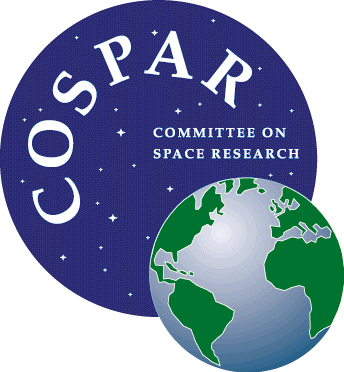The next PRBEM sessions for the COSPAR 2022 44th Scientific Assembly have been planned. The assembly will take place 16-24 July 2022 at Athens, Greece.
- PRBEM.1 : EMPIRICAL AND NUMERICAL MODELS OF THE NEAR-EARTH RADIATION ENVIRONMENT
- Main Scientific Organizer : Yihua Zheng
- Deputy Organizer : Yuri Shprits
- The near-Earth radiation environment includes electrons and protons that can harm technological systems and astronauts. Our community describes these environments through numerical simulations and empirical methods, using local, regional, and global models to inform the planning, design, and testing of space systems and technology. We also engage in verification and validation efforts to compare models to each other, to environment observations, and to radiation effects observations. We welcome contributions that describe model results, modeling techniques, model status updates, and model validations. We are interested in all models with a climatological application: long term simulations, global numerical simulations, data assimilation models, machine learning models, and statistical models.
- PRBEM.2 : RADIATION BELT MISSIONS, DATA SETS, DATA PROCESSING, AND INTERCALIBRATION
- Main Scientific Organizer : Ingmar Sandberg
- Deputy Organizer : Seth Claudepierre
- The lifeblood of radiation belt studies is observations. Following the flagship Van Allen Probes and Arase missions, the primary source of radiation belt measurements in solar cycle 25 is expected to come from dedicated experiments onboard upcoming CubeSat missions, and from numerous radiation monitors as hosted payloads. Understanding a mission’s sensors and the nature of its orbit and operation are required for the optimal use of its data. Moreover, the intercalibration of multiple datasets is essential for scientific analyses and the construction of consensus radiation belt models based on combined observations. Lessons learned and data processing best practices facilitate efficient and optimal extraction of value from scarce data. In this session, we invite presentations on these topics as they relate to recent, active, and upcoming missions that will make observations of the radiation belts, along with the methods and tools used for the processing and analysis of these datasets.
- PRBEM.3 : EXTENDING THE PREDICTION HORIZON OF EARTH’S RADIATION BELTS: FROM SCIENCE TO END-USERS SPACE WEATHER SERVICES
- Main Scientific Organizer : Ioannis A. Daglis
- Deputy Organizer : Antoine Brunet
- Relativistic electrons and protons in geospace form the Van Allen radiation belts, and pose a major space weather threat to spacecraft operations and functionality. Their emergence and loss are largely influenced by plasma waves of various frequencies trough wave-particle interactions. Understanding these processes and linking their occurrence and intensities with dynamical solar structures and interplanetary transients in sufficient detail is a key point to produce a more accurate and reliable forecasting of the potentially disruptive emergence of relativistic electrons and protons. This session invites relevant studies using in-situ and ground based observations, physics-based models, machine learning and/or numerical simulations.
